
The Home Fleet was a fleet of the Royal Navy that operated from the United Kingdom's territorial waters from 1902 with intervals until 1967. In 1967, it was merged with the Mediterranean Fleet creating the new Western Fleet.

The Battle of the Denmark Strait was a naval engagement in the Second World War, which took place on 24 May 1941 between ships of the Royal Navy and the Kriegsmarine. The British battleship HMS Prince of Wales and the battlecruiser HMS Hood fought the German battleship Bismarck and the heavy cruiser Prinz Eugen, which were attempting to break out into the North Atlantic to attack Allied merchant shipping through the Denmark Strait between Greenland and Iceland.

The Battle of the North Cape was a Second World War naval battle that occurred on 26 December 1943, as part of the Arctic campaign. The German battleship Scharnhorst, on an operation to attack Arctic convoys of war materiel from the western Allies to the Soviet Union, was brought to battle and sunk by the Royal Navy's battleship HMS Duke of York with cruisers and destroyers, including an onslaught from the destroyer HNoMS Stord of the exiled Royal Norwegian Navy, off the North Cape, Norway.
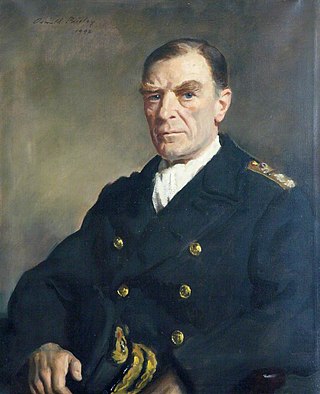
Admiral of the Fleet Sir Philip Louis Vian, & Two Bars was a Royal Navy officer who served in both World Wars.

Sink the Bismarck! is a 1960 black-and-white CinemaScope British war film based on the 1959 book The Last Nine Days of the Bismarck by C. S. Forester. It stars Kenneth More and Dana Wynter and was directed by Lewis Gilbert. To date, it is the only film made that deals directly with the operations, chase and sinking of the battleship Bismarck by the Royal Navy during the Second World War. Although war films were common in the 1960s, Sink the Bismarck! was seen as something of an anomaly, with much of its time devoted to the "unsung back-room planners as much as on the combatants themselves". Its historical accuracy, in particular, met with much praise despite a number of inconsistencies.
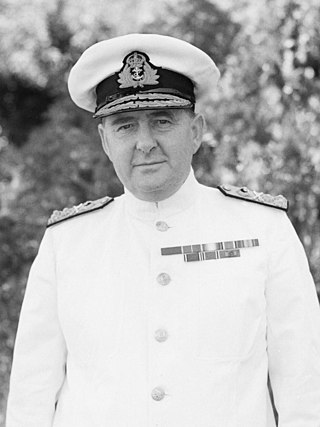
Admiral Sir Henry Harwood Harwood, was a Royal Navy officer who won fame in the Battle of the River Plate during the Second World War.

Admiral of the Fleet Sir James Fownes Somerville, was a Royal Navy officer. He served in the First World War as fleet wireless officer for the Mediterranean Fleet where he was involved in providing naval support for the Gallipoli Campaign. He also served in the Second World War as commander of the newly formed Force H: after the French armistice with Germany, Winston Churchill gave Somerville and Force H the task of neutralizing the main element of the French battle fleet, then at Mers El Kébir in Algeria. After he had destroyed the French Battle fleet, Somerville played an important role in the pursuit and sinking of the German battleship Bismarck.
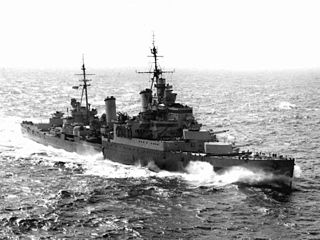
HMS Sheffield was one of the Southampton sub class of the Town-class cruisers of the Royal Navy. Completed in 1937, she was active in all major naval European theatres of the Second World War : in the Atlantic Ocean, the Mediterranean Sea and the Arctic Ocean. Sheffield assisted in the sinking of both German battleships sunk at sea : in the Last battle of Bismarck she directed torpedo aircraft to Bismarck, and during the Battle of the North Cape she took part in the shadowing of Scharnhorst.
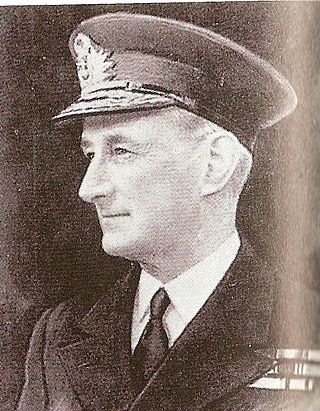
Vice-Admiral Lancelot Ernest Holland, was a Royal Navy officer who commanded the British force in the Battle of the Denmark Strait in May 1941 against the German battleship Bismarck. Holland was lost when he stayed at his post during the sinking of HMS Hood.

Admiral of the Fleet John Cronyn Tovey, 1st Baron Tovey,, sometimes known as Jack Tovey, was a Royal Navy officer. During the First World War he commanded the destroyer HMS Onslow at the Battle of Jutland and then commanded the destroyer Ursa at the Second Battle of Heligoland Bight. During the Second World War he initially served as Second-in-Command of the Mediterranean Fleet in which role he commanded the Mediterranean Fleet's Light Forces. He then served as Commander-in-Chief of the Home Fleet and was responsible for orchestrating the pursuit and destruction of the Bismarck. After that he became Commander-in-Chief, The Nore with responsibility for controlling the east coast convoys and organising minesweeping operations.

Rear Admiral Sir Robert Keith Arbuthnot, 4th Baronet, was a Royal Navy officer during the First World War. He was killed at the Battle of Jutland, when the cruiser squadron he commanded came under heavy fire after a bold but ill-judged attack on the German battle fleet.

HMS Hermione was a Dido-class light cruiser of the Royal Navy. She was built by Alexander Stephen and Sons, with the keel laid down on 6 October 1937. She was launched on 18 May 1939 and commissioned 25 March 1941. On 16 June 1942, Hermione was torpedoed and sunk by the German submarine U-205 in the Mediterranean. Eighty-eight crewmembers were killed.
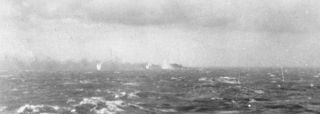
The last battle of the German battleship Bismarck took place in the Atlantic Ocean approximately 300 nautical miles west of Brest, France, on 26–27 May 1941 between the German battleship Bismarck and naval and air elements of the British Royal Navy. Although it was a decisive action between capital ships, it has no generally accepted name. It was the culmination of Operation Rheinübung where the attempt of two German ships to disrupt the Atlantic Convoys to the United Kingdom failed with the scuttling of the Bismarck.

Admiral of the Fleet Sir Rhoderick Robert McGrigor, was a senior Royal Navy officer. He fought in the First World War and saw action during the Gallipoli Campaign and then the Battle of Jutland. He also served in the Second World War, taking part in the sinking of the Bismarck in May 1941, carrying out the office of Assistant Chief of the Naval Staff (Weapons) and commanding the 1st Cruiser Squadron during operations off the Norwegian coast and convoys to North Russia. Furthermore, he served as First Sea Lord in the early 1950s and is most remembered as a leading proponent of carrier-based air power.

Admiral Sir Frederick Hew George Dalrymple-Hamilton, KCB was a British naval officer who served in World War I and World War II. He was captain of HMS Rodney when it engaged the Bismarck on 27 May 1941.

Admiral of the Fleet Sir Charles Morton Forbes, was a Royal Navy officer. He served in the First World War, seeing action in the Dardanelles campaign and at the Battle of Jutland and, as captain of a cruiser, was present at the surrender of the German fleet. During the Second World War, he served as Commander-in-Chief, Home Fleet: his fleet suffered heavy losses including the aircraft carrier HMS Glorious and nine destroyers during the Norwegian campaign in Spring 1940. He went on to be Commander-in-Chief, Plymouth in May 1941 and in that capacity he organised the defence of Plymouth from air attack, prosecuted attacks on enemy shipping using the harbour at Brest as well as other ports along the French coast, and also initiated the St Nazaire Raid in March 1942 before retiring in August 1943.

Captain Ralph Kerr CBE was an officer in the Royal Navy. He served in the First and Second World Wars, and was killed in the sinking of HMS Hood by the German battleship Bismarck at the Battle of the Denmark Strait.

Admiral Sir William George Tennant was a British naval officer. He was lauded for overseeing the successful evacuation of Dunkirk in 1940. Tennant subsequently served as captain of the battlecruiser HMS Repulse, when she searched for German capital ships in the Atlantic. He remained in this capacity when the Repulse was sunk by the Japanese along with HMS Prince of Wales in the South China Sea on 10 December 1941, three days after the attack on Pearl Harbor. He later aided in the setup of the Mulberry harbours and the Pluto pipelines, a crucial part of the success of Operation Overlord. He died in 1963.

Johann Günther Lütjens was a German admiral whose military service spanned more than 30 years and two world wars. Lütjens is best known for his actions during World War II and his command of the battleship Bismarck during her foray into the Atlantic Ocean in 1941. He was killed in action during the last battle of the battleship Bismarck.
Vice Admiral Sir Benjamin Charles Stanley Martin was a Royal Navy officer who was the first boy from the Royal Naval Hospital School, Greenwich, to reach flag rank in the Royal Navy. He was also the first officer from the lower deck to become a rear admiral on the active list in modern times and only the second, after Sir Thomas Spence Lyne, to achieve flag rank at all in the same period.

















